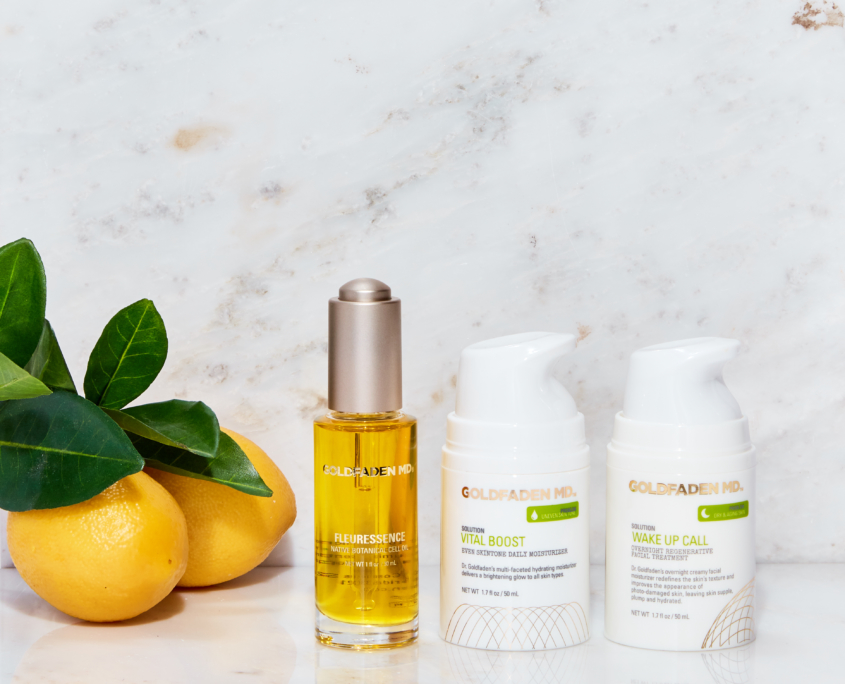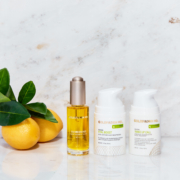Moisturizers vs. Oils: How They Work
By Kaitlyn McLintock
 There are people who use oils and moisturizers interchangeably. If parched skin presents itself, they reach for whichever product is closest to them, either distributing a few drops of a silky oil around the skin or dispensing a dollop of creamy moisturizer. Any moisturizing product is better than none, so by that logic, oils, and moisturizers are kind of the same thing, right? The answer is not quite. Let us explain.
There are people who use oils and moisturizers interchangeably. If parched skin presents itself, they reach for whichever product is closest to them, either distributing a few drops of a silky oil around the skin or dispensing a dollop of creamy moisturizer. Any moisturizing product is better than none, so by that logic, oils, and moisturizers are kind of the same thing, right? The answer is not quite. Let us explain.
While it’s true that both oils and moisturizers alleviate the look and feel of dehydrated skin, they do so differently, and in order to use these products most effectively, you need to know how and why they work the way that they do. Before we get ahead of ourselves, however, we need to add 2 new words to our skincare vocabulary—humectant and occlusive.
Let’s start with the word humectant first. A humectant is anything that pulls water into the skin, either from the air or a topical product (popular humectants include glycerin, hyaluronic acid, and aloe vera). These ingredients literally increase the amount of water that’s present in our skin cells, thus hydrating our skin. An occlusive, on the other hand, is something that forms a barrier on the skin, preventing the water that’s already in our skin from leaving it.
 So, how does that apply to the oil vs. moisturizer debate? Well, to put it simply, oils are occlusives, and moisturizers are humectants. In other words, oils trap water in the skin, preventing trans-epidermal water loss (which is otherwise known as TEWL), but they don’t pull any added water in. Moisturizers, on the other hand, are often formulated with humectants such as glycerin or aloe vera as the primary ingredient, meaning they have the ability to draw new water into our skin cells.
So, how does that apply to the oil vs. moisturizer debate? Well, to put it simply, oils are occlusives, and moisturizers are humectants. In other words, oils trap water in the skin, preventing trans-epidermal water loss (which is otherwise known as TEWL), but they don’t pull any added water in. Moisturizers, on the other hand, are often formulated with humectants such as glycerin or aloe vera as the primary ingredient, meaning they have the ability to draw new water into our skin cells.
Keep in mind that this isn’t necessarily a hard and fast rule, because there are many products on the market that include both humectants and occlusives as ingredients. Take Goldfaden’s Vital Boost Moisturizer, for instance. This antioxidant-rich moisturizer is formulated with a combination of glycerin and hyaluronic acid (humectants), and jojoba and grapefruit oil (occlusives). This fusion of ingredients hydrates the skin instantly and keeps that hydration there long-term.
Because oils and moisturizers work differently, one isn’t necessarily better, or more effective, than the other. In fact, many people use moisturizers and oils in tandem (this is our favorite tip, especially for those of us who live in cold climates or are prone to dry skin). After cleansing, toning, and treating the skin, apply a moisturizer. After the moisturizer is applied, follow up with an oil. Why the back-to-back application, you ask? It’s simple. The oil will seal in the moisturizer, keeping the skin hydrated for longer and warding off the dreaded tenants of dry skin such as redness, flakiness, and itchiness. (We like using the Fleuressence Native Botanical Cell Oil, which is formulated with a mix of omega fatty acid-rich oils—including baobab, Kalahari, rosehip, and jojoba oils).
ABOUT THE WRITER:
Kaitlyn McLintock is a beauty and wellness writer based in Los Angeles. Her work has appeared in such publications as Popsugar, Byrdie, Hello Giggles, Who What Wear, and more. When she’s not writing, researching, and editing, or testing out the latest skincare and makeup products, she’s drinking coffee and spritzing Goldfaden’s Mist RX all over her skin.


Leave a Reply
Want to join the discussion?Feel free to contribute!